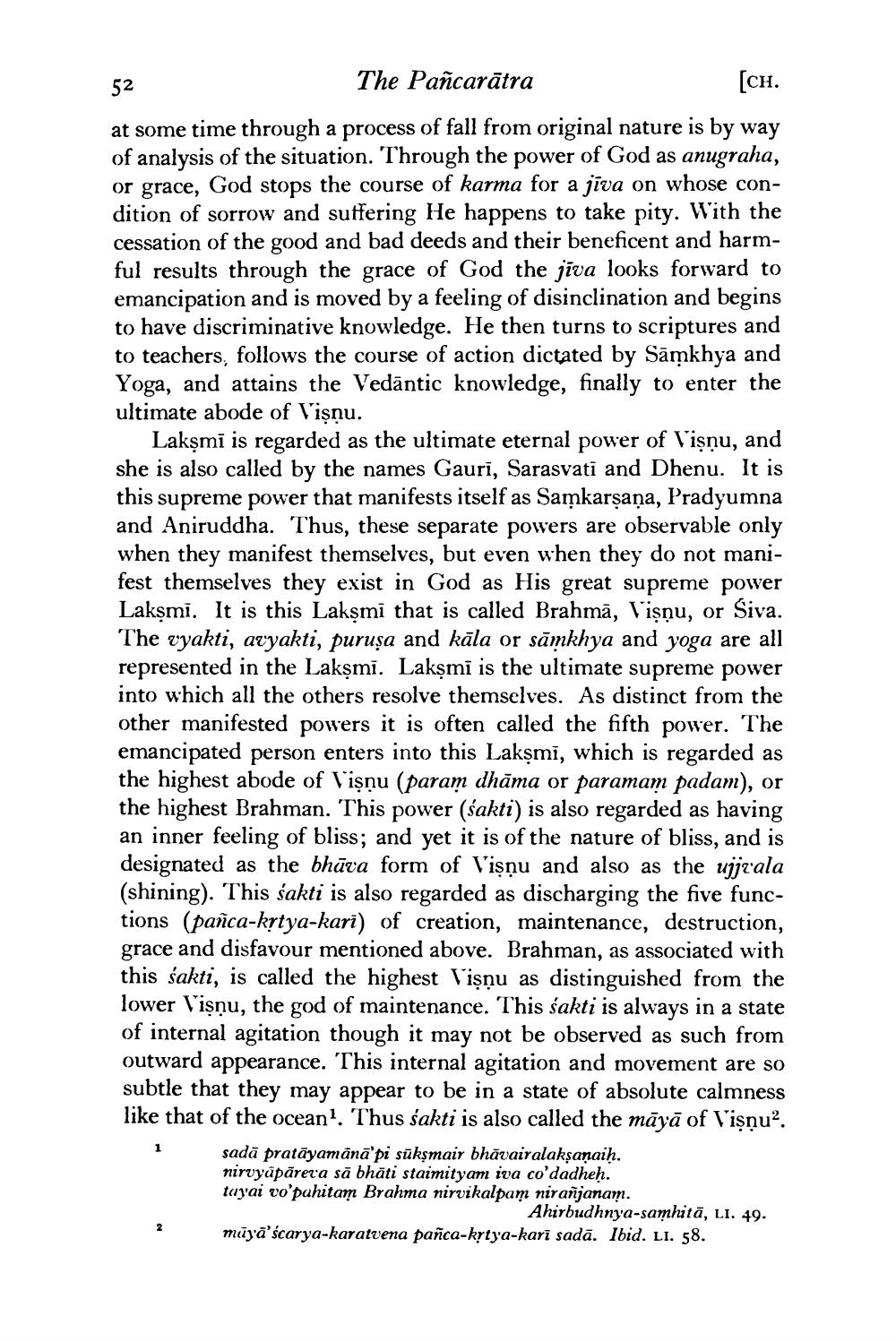________________
52
The Pañcarātra
[CH.
at some time through a process of fall from original nature is by way of analysis of the situation. Through the power of God as anugraha, or grace, God stops the course of karma for a jīva on whose condition of sorrow and suffering He happens to take pity. With the cessation of the good and bad deeds and their beneficent and harmful results through the grace of God the jīva looks forward to emancipation and is moved by a feeling of disinclination and begins to have discriminative knowledge. He then turns to scriptures and to teachers, follows the course of action dictated by Sāmkhya and Yoga, and attains the Vedāntic knowledge, finally to enter the ultimate abode of Vişnu.
Lakşmi is regarded as the ultimate eternal power of Vişnu, and she is also called by the names Gaurī, Sarasvati and Dhenu. It is this supreme power that manifests itself as Samkarşaņa, Pradyumna and Aniruddha. Thus, these separate powers are observable only when they manifest themselves, but even when they do not manifest themselves they exist in God as His great supreme power Lakşmi. It is this Lakşmi that is called Brahmā, Vişnu, or Siva. The vyakti, aryakti, purușa and kāla or sāmkhya and yoga are all represented in the Lakşmi. Lakşmi is the ultimate supreme power into which all the others resolve themselves. As distinct from the other manifested powers it is often called the fifth power. The emancipated person enters into this Lakşmi, which is regarded as the highest abode of Vişnu (param dhāma or paramam padam), or the highest Brahman. This power (sakti) is also regarded as having an inner feeling of bliss; and yet it is of the nature of bliss, and is designated as the bhūva form of Visnu and also as the uivala (shining). This sakti is also regarded as discharging the five functions (pañca-krtya-kari) of creation, maintenance, destruction, grace and disfavour mentioned above. Brahman, as associated with this sakti, is called the highest Visnu as distinguished from the lower Visņu, the god of maintenance. This sakti is always in a state of internal agitation though it may not be observed as such from outward appearance. This internal agitation and movement are so subtle that they may appear to be in a state of absolute calmness like that of the ocean. Thus sakti is also called the māyā of Visnu.
sadā pratāyamānā pi sūksmair bhāvairalakșanaiḥ. nirvyāpāreta să bhāti staimityam iva co'dadheh. tuyai vo'puhitam Brahma nirvikalpam nirañjanam.
Ahirbudhnya-samhitā, LI. 49. māyā'scarya-karatvena pañca-krtya-karī sadā. Ibid. LI. 58.




